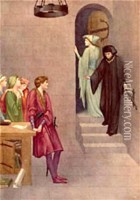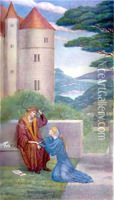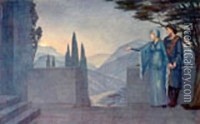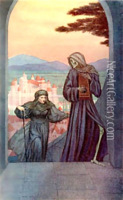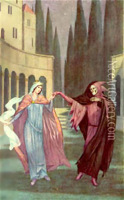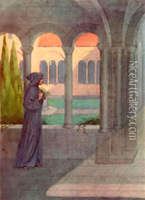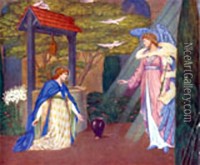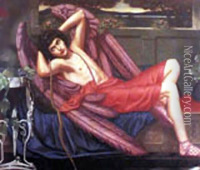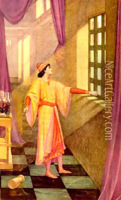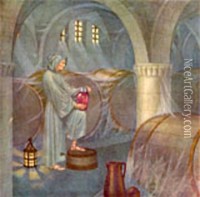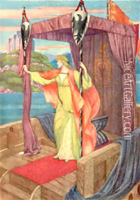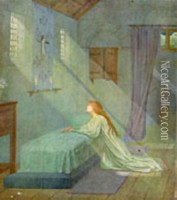Sandor Bortnyik Paintings
Sándor Börtönyik was a Hungarian painter and graphic designer, born in Marosvásárhely, Austria-Hungary (now Târgu Mureș, Romania) in 1893. He is often associated with the avant-garde movement and is well-known for his contributions to constructivism and his role in the development of modern commercial graphics in Hungary.
Börtönyik's artistic journey began in Budapest, where he was initially influenced by Fauvism and later by Cubism. During the early 1910s, he became a member of the progressive artist group 'The Eight' (Nyolcak), which aimed to integrate modern French artistic directions into Hungarian art.
In 1919, following the collapse of the Hungarian Soviet Republic, Börtönyik moved to Vienna and later to Weimar, where he became acquainted with the Bauhaus movement. His exposure to Bauhaus had a profound impact on his style, leading to a more geometric and abstract approach in his works.
He returned to Hungary in the early 1920s and became a leading figure in promoting modern graphic design and commercial art. Börtönyik's work during this period included posters, advertisements, and book illustrations, which showcased a clear, functional, and dynamic use of typography and imagery.
Despite his inclination towards modernism and constructivism, Börtönyik's style was versatile, and he did not restrict himself to a single art form. He was also involved in stage design and taught at the Academy of Fine Arts in Budapest. His influence extended to his students and the Hungarian art scene, where he encouraged the exploration of new artistic techniques and ideas.
Börtönyik's art often reflected social themes and the political climate of his time. Throughout the 1930s and 1940s, his work was affected by the rise of authoritarian regimes in Europe, which posed challenges to the avant-garde art community. Nevertheless, he continued to work and adapt his style, even incorporating elements of Surrealism and Expressionism.
Sándor Börtönyik passed away in 1976 in Budapest, Hungary. His legacy is marked by his role in shaping modern art in Hungary and his innovative approach to graphic design, which continues to influence artists and designers to this day.
